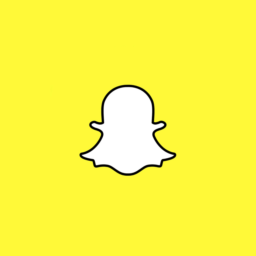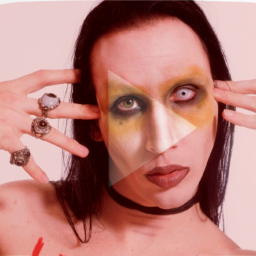Whether you’ve ever used Snapchat or not, you have felt the influence of the social app’s design choices. How will it shape the future of music?

Snapchat created something called ‘Stories’. Stories are composed of photos and short videos that stay available for 24 hours. They allow people to get a look into other people’s days, including celebrities. The feature has been shamelessly copied by Facebook and integrated in Instagram, but the low-barrier channel-flicking content format is now seeing integration in unexpected places.
Forbes launched Cards, Huffington Post launched storybooks, and Medium launched Series. This led David Emery, VP Global Marketing Strategy of Kobalt Label Services, to ask the question: what will the Snapchat for music look like?
I decided to take a stab at the challenge and conceptualize how people may interact with music in the future.
How people engage with content
I specifically looked at Soundcloud, Instagram, and Tinder for some of the most innovative and influential design choices for navigating, sharing, and engaging with content. Soundcloud for the music, Instagram for visuals, and Tinder for how it lets people sift through ‘content’. I apologize in advance for all the times I’m going to refer to people on Tinder as ‘content’, but that’s the most effective way to approach Tinder for the sake of this article.
Learning from Soundcloud

One key strength of Soundcloud is that every time you open the app or web client there’s new content for you. Either from the artists you follow, through its Explore feature, or through personalized recommendations. People should be able to check out content as soon as they open the app.
Text is easy to engage with: you can copy the parts you want to comment on, quote it, and comment. With audio this is harder. Soundcloud lets people comment on the timeline of tracks, which makes it much more fun to engage with content. YouTube solves this problem by letting people put time tags in comments.
If you really love the content, you can repost it to your network. This makes the service attractive to content creators, but also to fans, because the feature gives them a way to express themselves and build up their profiles without actually having to create music themselves. Compare this to Spotify, where the barrier to build up your profile as a user is much higher due to the energy that you have to put into creating (and maintaining) playlists.
Recommendations mean that people can jump in, hit play and stop thinking. Soundcloud is one of the few music services that seem to have found a great balance between very active types of behaviour, as well as more passive modes.
Learning from Instagram

There’s a reason why I’m highlighting Instagram instead of Snapchat. Instagram has two modes of creation and navigation. You can either scroll down your main feed, where people will typically only post their best content OR you can tap one of the stories at the top and watch a feed of Snapchat-like Stories. Tap to skip!
Instagram makes it really easy to create and navigate through content. Stories’ ephemeral quality reduces the barrier to sharing moments (creating) and makes people worry less that they’re ‘oversharing’. Snapchat’s filters, which Instagram hasn’t been able to clone well (yet), make it easy to create fun content. People open up their camera, see what filters are available, and create something funny. No effort, and it’s still fun for their friends or followers to watch.
Learning from Tinder

The brutal nature of dating services is that profiles (people) are content, which also means that the majority of users will not be interested in the majority of content offered on the service. So you can do two things: make going through content as effortless as possible and build a recommendation engine which delivers the most relevant content to users. Tinder’s focus on the former made them the addictive dating app they are today.
Quickly liking and disliking content is like a bookmarking function which also helps to feed information to recommendation algorithms.
If you really want to dive deeper into a piece of content, you can tap to expand it (open profile), but basically the app’s figured out a great way to present huge amounts of content to people, of which the majority is ‘irrelevant’, and make it engaging to quickly navigate through it.
Must haves

The key qualities of social content apps right now are a high volume of content, easy creation and interactivity, and fast navigation. Bookmarking and reposting allows for users to express themselves with little effort.
Breaking it down

This is the most important feature for the end user. There are already a lot of good services in order to access large catalogues, to dive deep, to search for specific content… Music Stories should not try to compete with that. Instead it is a new form of media, which needs to be so engaging that it will affect the creative decisions of artists.
Soundcloud’s feed is a good example, but so is Snapchat’s main Stories screen (pictured below). Both show the user a variety of content that they can engage with immediately by hitting the play button or by tapping on a profile image.

The content in the app needs to be bite-size so users can get a quick idea of the content immediately and decide whether they like it or not. If yes, they should be able to go deeper (eg. Tinder‘s ‘tap to expand’) or interact, like reposting. If not, they need to be able to skip and move on.
When a user has an empty content feed, you can serve recommendations. When a user went through all new content already, you should invite them to create something.

You want people to be able to lean back, but ideally you’ll pull people into your app a few times a day and get them to browse through some fresh content. To get them to re-open the app, there needs to be meaningful interaction. That can come in the form of swipes, comments, or remixing.
One of the cool things about Snapchat is that you can discover new filters through your friends. Think:
“Woah, you can be Harry Potter? I want to be Harry Potter, too!”
So if we extend that to Music Stories, creating some music idea needs to be as simple as making yourself look like Harry Potter or face-swapping with a painting or statue in a museum.

This means that artists should be able to add music to the app in a way that allows people to remix it, to make it their own. All remixes can stay linked to the original. You could even track a remix of a remix of a remix in the same way you can see repost-chains on Tumblr.
How do you make it easy to create and to interact with music?
That’s the biggest challenge. People are shy or may not feel creative. You could let them use images or video (like Musically), or you could let them replace one of the samples in the beat with a sound from their environment (imagine replacing the “yeah” from Justin Timberlake‘s SexyBack with your own sound), or you could let them play with the pitch of the vocals.
Options need to be limited, easy-to-understand and manipulate, and inviting. It should be as simple as swiping through Snapchat filter options.
Through creation and interactivity, users build up a profile to show off their music identity. Content is ephemeral, unless you choose differently (like on Instagram). I’d go for ephemeral by default and then give users the option to ‘add to profile’ once content reaches a certain engagement threshold. This will need a lot of tweaking and testing to get right.
Interactions are not ephemeral. Reposts go straight to profile, until you undo them.

Stories are all about being able to jump through content quickly. Tinder’s Like / Dislike function could work in Music Stories as a ‘skip’ and ‘bookmark’ function. By letting people bookmark stuff they’ll have content to come back to when they’re in a more passive mode. Perhaps an initial Like would send music to a personal inbox which stays available for a limited time, then when you Like content that’s in that inbox it gets shared to your profile, or saved in some other manner.
Music Stories should NOT be a Tinder for Music. Tinder’s strength is to let users navigate through a lot of content that doesn’t appeal to them, while making the interaction interesting. It’s an interesting model that manages to create value from content that may be irrelevant to some users.
Translating to features
The next steps are to start translating the concept into features. This means user stories (what you want users to be able to do with the app) need to be articulated clearly. Mock ups of specific interactions need to be drawn and tested with audiences. Challenges need to be considered, like the classic issue of getting people to start creating content when there’s no audience in the app yet (Instagram solved this by letting people share content to other social networks).
Now I invite YOU to take this challenge and develop the vision for Music Stories.
(Don’t forget to read David Emery’s original post, which prompted me to write this piece)









